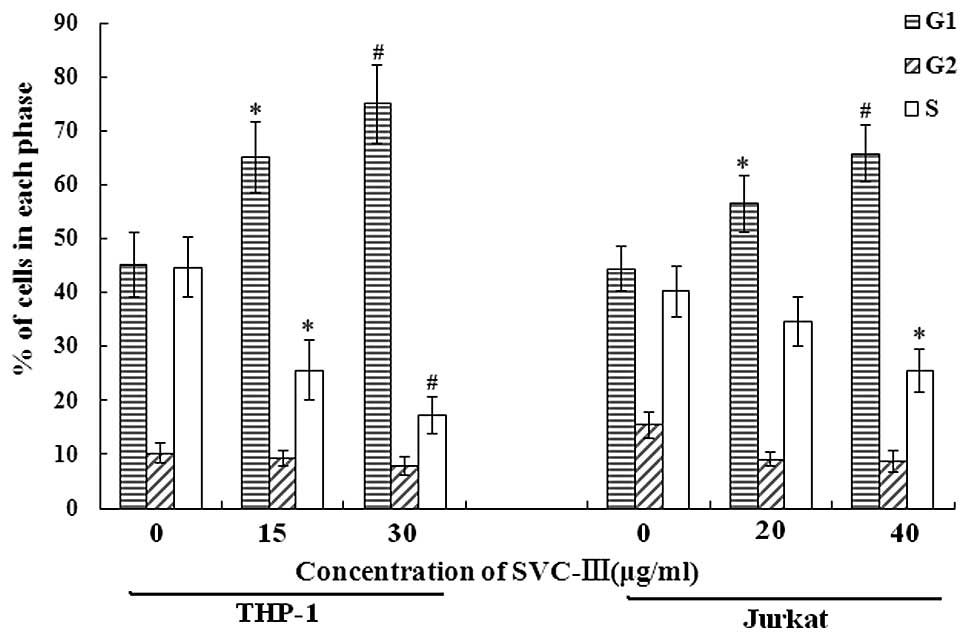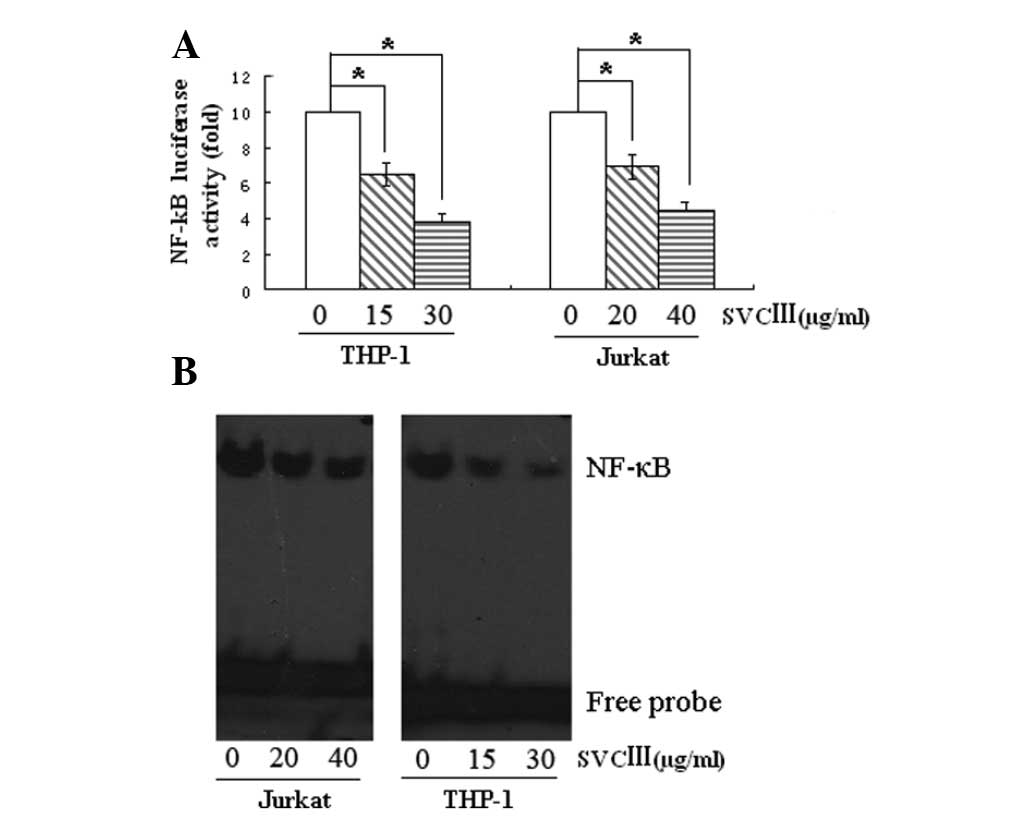|
1
|
Batista CVF, Pozo LD, Zamudio FZ,
Contreras S, Becerril B, Wanke E and Possani LD: Proteomics of the
venom from the Amazonian scorpion Tityus cambridgei and the
role of prolines on mass spectrometry analysis of toxins. J
Chromatogr B Analyt Technol Biomed Life Sci. 803:55–66. 2004.
View Article : Google Scholar : PubMed/NCBI
|
|
2
|
Zargan J, Sajad M, Umar S, Naime M, Ali S
and Khan HA: Scorpion (Androctonus crassicauda) venom limits
growth of transformed cells (SH-SY5Y and MCF-7) by cytotoxicity and
cell cycle arrest. Exp Mol Pathol. 91:447–454. 2011.
|
|
3
|
Gao F, Li H, Chen YD, Yu XN, Wang R and
Chen XL: Upregulation of PTEN involved in scorpion venom-induced
apoptosis in a lymphoma cell line. Leuk Lymphoma. 50:633–641. 2009.
View Article : Google Scholar : PubMed/NCBI
|
|
4
|
Zargan J, Sajad M, Umar S, Naime M, Ali S
and Khan HA: Scorpion (Odontobuthus doriae) venom induces
apoptosis and inhibits DNA synthesis in human neuroblastoma cells.
Mol Cell Biochem. 348:173–181. 2011.
|
|
5
|
Hayden MS, West AP and Ghosh S: NF-κB and
the immune response. Oncogene. 25:6758–6780. 2006.
|
|
6
|
Garg A and Aggarwal BB: Nuclear
transcription factor-kappaB as a target for cancer drug
development. Leukemia. 16:1053–1068. 2002. View Article : Google Scholar : PubMed/NCBI
|
|
7
|
Escárcega RO, Fuentes-Alexandro S,
García-Carrasco M, Gatica A and Zamora A: The transcription factor
nuclear factor-κB and cancer. Clin Oncol (R Coll Radiol).
19:154–161. 2007.
|
|
8
|
Hanahan D and Weinberg RA: The hallmarks
of cancer. Cell. 100:57–70. 2000. View Article : Google Scholar
|
|
9
|
Gupta SD and Gomes A, Debnath A, Saha A
and Gomes A: Apoptosis induction in human leukemic cells by a novel
protein Bengalin, isolated from Indian black scorpion venom:
through mitochondrial pathway and inhibition of heat shock
proteins. Chem Biol Interact. 183:293–303. 2010. View Article : Google Scholar
|
|
10
|
Das Gupta S, Debnath A, Saha A, Giri B,
Tripathi G, Vedasiromoni JR and Gomes A: Indian black scorpion
(Heterometrus bengalensis Koch) venom induced
antiproliferative and apoptogenic activity against human leukemic
cell lines U937 and K562. Leukemia Res. 31:817–825. 2007.
|
|
11
|
Fan S, Sun Z, Jiang D, Dai C, Ma Y, Zhao
Z, Liu H, Wu Y, Cao Z and Li W: BmKCT toxin inhibits glioma
proliferation and tumor metastasis. Cancer Lett. 291:158–166. 2010.
View Article : Google Scholar : PubMed/NCBI
|
|
12
|
Fu YJ, Yin LT, Liang AH, Zhang CF, Wang W,
Chai BF, Yang JY and Fan XJ: Therapeutic potential of
chlorotoxin-like neurotoxin from the Chinese scorpion for human
gliomas. Neurosci Lett. 412:62–67. 2007. View Article : Google Scholar : PubMed/NCBI
|
|
13
|
Wang WX and Ji YH: Scorpion venom induces
glioma cell apoptosis in vivo and inhibits glioma tumor growth in
vitro. J Neurooncol. 73:1–7. 2005. View Article : Google Scholar : PubMed/NCBI
|
|
14
|
D’Suze G, Rosales A, Salazar V and Sevcik
C: Apoptogenic peptides from Tityus discrepans scorpion
venom acting against the SKBR3 breast cancer cell line. Toxicon.
56:1497–1505. 2010.
|
|
15
|
Zhang YY, Wu LC, Wang ZP, Wang ZX, Jia Q,
Jiang GS and Zhang WD: Anti-proliferation effect of polypeptide
extracted from scorpion venom on human prostate cancer cells in
vitro. J Clin Med Res. 1:24–31. 2009.PubMed/NCBI
|
|
16
|
Omran MAA: In vitro anticancer effect of
scorpion Leiurus quinquestriatus and Egyptian Cobra venom on
human breast and prostate cancer cell lines. J Med Sci. 3:66–86.
2003.
|
|
17
|
Bonizzi G and Karin M: The two NF-kappaB
activation pathways and their role in innate and adaptive immunity.
Trends Immunol. 25:280–288. 2004. View Article : Google Scholar : PubMed/NCBI
|
|
18
|
Yamamoto M and Takeda K: Role of nuclear
IkappaB proteins in the regulation of host immune responses. J
Infect Chemother. 14:265–269. 2008. View Article : Google Scholar : PubMed/NCBI
|
|
19
|
Wu Y and Zhou BP:
TNF-alpha/NF-kappaB/Snail pathway in cancer cell migration and
invasion. Br J Cancer. 102:639–644. 2010. View Article : Google Scholar : PubMed/NCBI
|
|
20
|
Sarkar FH, Li Y, Wang Z and Kong D:
NF-kappaB signaling pathway and its therapeutic implications in
human diseases. Int Rev Immunol. 27:293–319. 2008. View Article : Google Scholar : PubMed/NCBI
|
|
21
|
Nishikori M: Classical and alternative
NF-κB activation pathways and their roles in lymphoid malignancies.
J Clin Exp Hematopathol. 45:15–24. 2005.
|
|
22
|
Wong JH, Lui VW, Umezawa K, Ho Y, Wong EY,
Ng MH, Cheng SH, Tsang CM, Tsao SW and Chan AT: A small molecule
inhibitor of NF-kappaB, dehydroxymethylepoxyquinomicin (DHMEQ),
suppresses growth and invasion of nasopharyngeal carcinoma (NPC)
cells. Cancer Lett. 287:23–32. 2010. View Article : Google Scholar : PubMed/NCBI
|
|
23
|
Warfel JM and D’Agnillo F: Anthrax lethal
toxin enhances TNF-induced endothelial VCAM-1 expression via an IFN
regulatory factor-1-dependent mechanism. J Immunol. 180:7516–7524.
2008. View Article : Google Scholar : PubMed/NCBI
|
|
24
|
Qiao Q, Nozaki Y, Sakoe K, Komatsu N and
Kirito K: NF-κB mediates aberrant activation of HIF-1 in malignant
lymphoma. Exp Hematol. 38:1199–1208. 2010.
|
|
25
|
Huber AV, Saleh L, Prast J, Haslinger P
and Knöfler M: Human chorionic gonadotrophin attenuates NF-kappaB
activation and cytokine expression of endometriotic stromal cells.
Mol Hum Reprod. 13:595–604. 2007. View Article : Google Scholar : PubMed/NCBI
|
|
26
|
Karin M and Ben-Neriah Y: Phosphorylation
meets ubiquitination: the control of NF-kB activity. Annu Rev
Immunol. 18:621–663. 2000. View Article : Google Scholar : PubMed/NCBI
|
|
27
|
Korn SH, Wouters EF, Vos N and
Janssen-Heininger YM: Cytokine-induced activation of nuclear
factor-kappa B is inhibited by hydrogen peroxide through oxidative
inactivation of IkappaB kinase. J Biol Chem. 276:35693–35700. 2001.
View Article : Google Scholar : PubMed/NCBI
|
|
28
|
Kumar A, Takada Y, Boriek AM and Aggarwal
BB: Nuclear factor-κB: its role in health and disease. J Mol Med.
82:434–448. 2004.
|
|
29
|
Sethi G, Sung B and Aggarwal BB: Nuclear
factor-kappaB activation: from bench to bedside. Exp Biol Med
(Maywood). 233:21–31. 2008. View Article : Google Scholar : PubMed/NCBI
|
|
30
|
Biliran H Jr, Wang Y, Banerjee S, Xu H,
Heng H, Thakur A, Bollig A, Sarkar FH and Liao JD: Overexpression
of cyclin D1 promotes tumor cell growth and confers resistance to
cisplatin-mediated apoptosis in an elastase-myc
transgene-expressing pancreatic tumor cell line. Clin Cancer Res.
11:6075–6086. 2005. View Article : Google Scholar : PubMed/NCBI
|
|
31
|
Sung B, Ahn KS and Aggarwal BB: Noscapine,
a benzylisoquinoline alkaloid, sensitizes leukemic cells to
chemotherapeutic agents and cytokines by modulating the NF-kappaB
signaling pathway. Cancer Res. 70:3259–3268. 2010. View Article : Google Scholar : PubMed/NCBI
|














